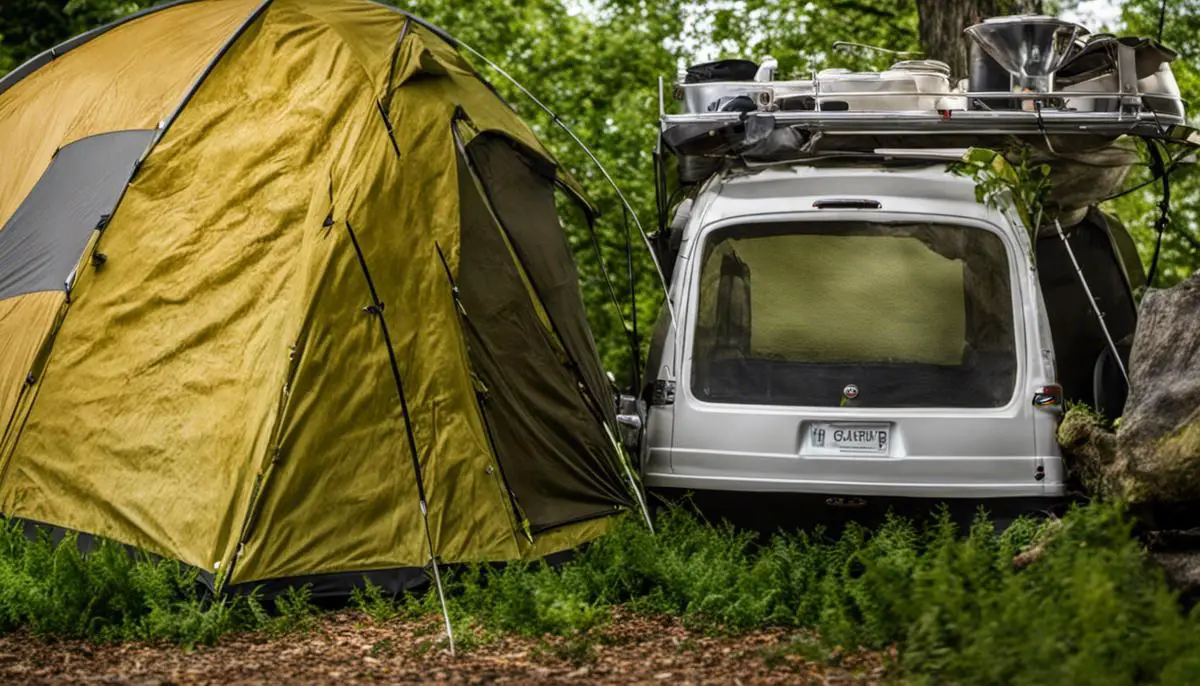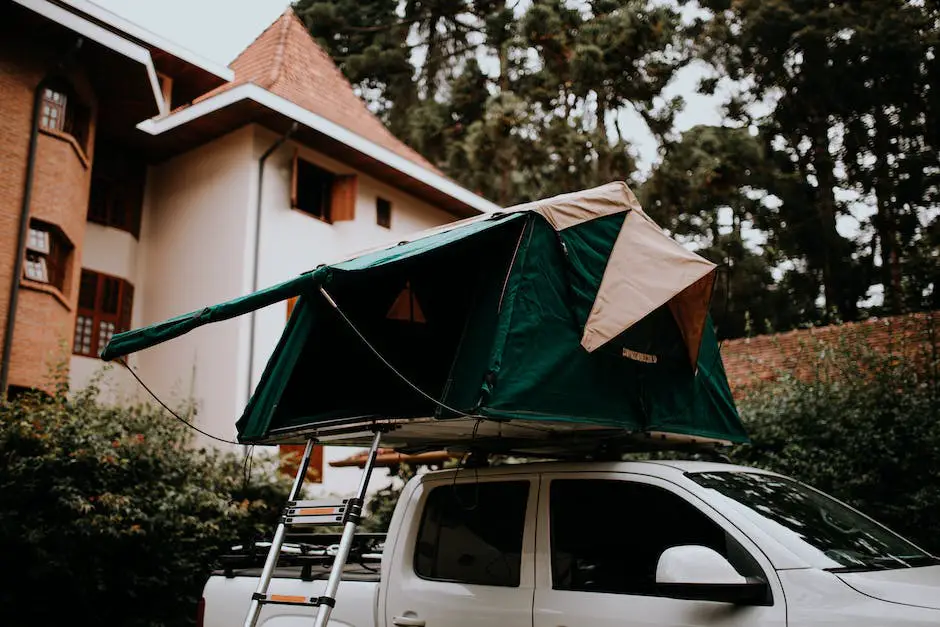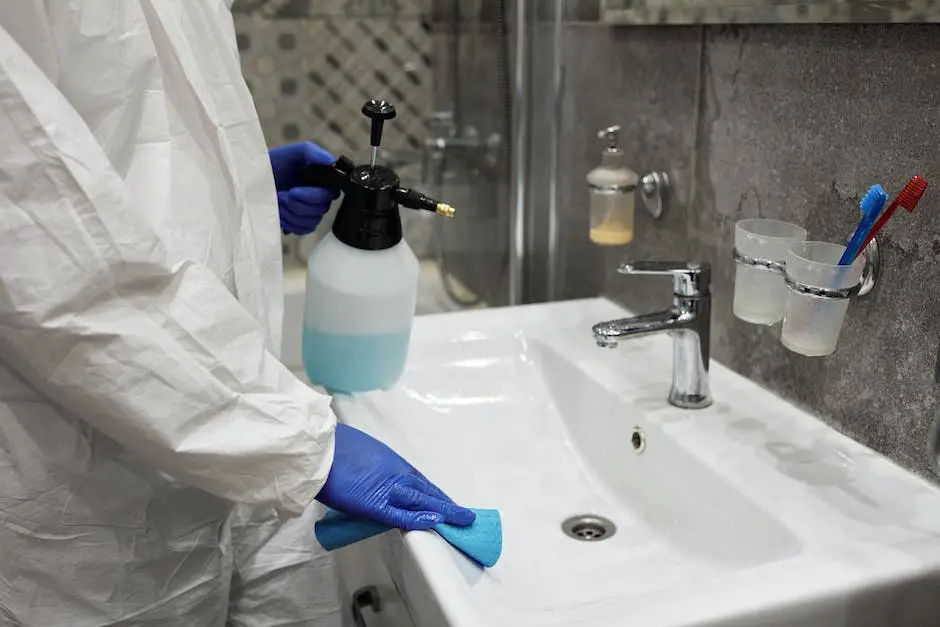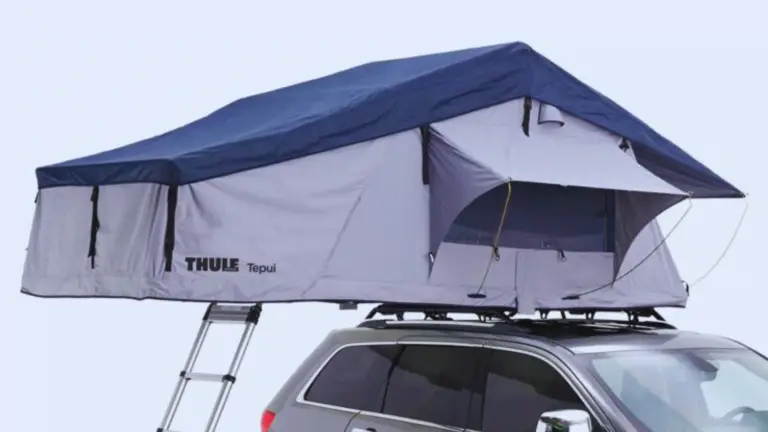The great outdoors is an exhilarating place to explore, with camping providing the ideal chance to connect with nature. A crucial part of this experience is the roof-top tent, your home away from home. However, the advent of mold in your camping gear can put a dampener on your adventures. Mold, an insidious and persistent fungus, tends to plague camping equipment due to its exposure to the elements. Discover effective methods for removing mold from roof top tent, ensuring a clean and healthy camping environment for your next outdoor adventure.
By understanding what mold is, how it forms, and its adverse impacts, we can effectively tackle it. So, let’s delve into how to clean and maintain a mold-free roof top tent utilizing the right tools, techniques, and precautionary measures.
Understanding Mold in Camping Equipment
Understanding Mold and Its Dangers
Mold is a type of fungi that occurs naturally in the environment. It becomes a problem when it starts growing indoors, especially in damp and humid areas. Outdoor camping equipment like a rooftop tent can become infested if they’ve been stored or used in a moist environment for prolonged periods. Mold not only damages the material of the camping gear but can also pose serious health risks, such as triggering allergies and causing respiratory problems.
How Mold Forms in Camping Equipment
In the case of a rooftop tent, mold usually forms when the tent is packed and stored without being thoroughly dried. If the tent has been exposed to moisture or humidity and hasn’t been properly dried before being packed away, it creates an ideal environment for mold. The mold spores present in the air find the damp fabric a perfect place for growth and multiplication.
Why Mold Predominantly Appears in Roof Top Tents
Camping gear like roof top tents often falls victim to mold growth because of their exposure to the elements. When you pack away the rooftop tent after a soggy camping trip or even a morning of heavy dew, you might trap moisture within the fabric folds. These trapped droplets do not evaporate and instead provide a humid micro-environment that encourages mold growth. Prolonged storage in these conditions further aggravates the situation.
Steps to Remove Mold from Roof Top Tent
- Start by brushing off the visible mold. Wear a mask to avoid inhaling the spores.
- Mix a solution of vinegar and water at a 50:50 ratio. Vinegar is a safe and effective mold killer.
- Spray the solution on the mold spots and let it sit for about an hour. This allows the vinegar to seep in and kill underlying fungi.
- After an hour, scrub the areas with a soft brush. You should see the mold coming off.
- Rinse the treated areas thoroughly with water and let the tent dry completely before packing it away.
- Once the tent is mold-free and dry, take preventive measures. Always ensure the tent is completely dry before storing. Consider storing it in a dry, well-ventilated space. If possible, use mold inhibitors available in the market, which provide an added layer of protection.
Remember, the key to keeping your roof top tent in the best condition is not allowing the mold to develop in the first place. Maintenance and adequate storage play a huge role in achieving this.

Proper Cleaning Techniques and Materials
Identifying Mold on Roof Top Tent
Before you begin the cleaning process, it’s essential to identify and inspect the level of mold on your roof top tent. Common signs of mold include black, green, or grey-brown spots and a musty smell. Mold can cause significant damage to the tent fabric and cause health issues if not addressed promptly.
Understanding the Right Cleaning Materials
Not all cleaning materials are suitable for removing mold from tents. You want to avoid harsh chemicals that can damage the fabric. Mild, eco-friendly cleaners like vinegar and baking soda are suitable alternatives. Other required materials include a soft bristle brush, a sponge, a sprayer, a drying towel, and a bucket.
Preparing the Cleaning Solution
Mix a solution of one part white vinegar to eight parts water. Alternatively, you can make a paste of baking soda and water. Avoid bleach-based solutions as they can damage the tent’s fabric and fade its color.
Cleaning the Tent
Firstly, ensure your tent is fully erected and secured. Begin the cleaning process by brushing off any loose mold or dirt from the tent’s surface, using a soft bristle brush. Once the surface is prepped, apply the cleaning solution by spraying it onto the affected areas. Let it sit for about 15-20 minutes.
Scrubbing and Rinsing
After letting the solution soak, gently scrub the tent using a soft sponge or a soft bristle brush. Pay special attention to areas stained by mold. Rinse the roof top tent thoroughly with clean water. Ensure all residue of the cleaning solution is properly rinsed off to prevent any future damage to the tent’s fabric.
Drying the Tent
It’s vital to make sure your tent is completely dry before packing it away. Any leftover moisture can encourage more mold growth. You can use a drying towel to wipe off excess water and then let the tent air dry in direct sunlight. The UV rays from the sun can kill any leftover mold spores.
Maintenance and Prevention
After the cleaning process, remember to regularly check your tent for any signs of mold, especially after using it in damp or humid conditions. Always ensure the tent is completely dry before storing it. An occasional sprinkle of baking soda inside the tent when it’s being stored can also help absorb excess moisture and prevent future mold growth.

Step-by-step Mold Removal Procedure
Identify the Mold
Before diving into the cleaning process, it’s essential that you identify whether it’s mold you’re aiming to remove. Mold often appears as black, green or brown patches or streaks on your tent fabric. It may also have a distinctly foul, musty odor. Make sure to wear protective gloves, eye gear and a mask during the procedure as mold can be harmful.
Gather Materials
For a successful mold removal, you will need a mildew remover or a special tent-cleaning product designed to remove mold and mildew. Other essentials include a soft scrub brush, clean cloth, water, and a place outdoors where you can clean your tent safely away from household items.
Prepare a Cleaning Solution
Mix the mildew remover or tent cleaner as per the manufacturer’s instructions. Most often, these products are mixed with water in appropriate proportions. If you can’t find a commercially-made cleaner, you can make a homemade solution with 1 cup of salt, 1 cup of lemon juice, and 1 gallon of hot water.
Clean the Moldy Tent
Move the tent to your designated cleaning area outdoors, and lay it out flat. Apply your cleaning solution to the moldy areas, ensuring that you’re not scrubbing too hard and potentially damaging the fabric. If the mold is linked to the seams, take extra precaution as you don’t want to weaken them any further. Let the solution sit for about 15-20 minutes, depending on how bad the mold problem is.
Rinse and Repeat
Rinse off the cleaning solution with water. If there’s still visible mold, repeat the cleaning and rinsing process until all traces of mold are gone. It’s imperative that all mold be removed, as any leftovers can quickly spread and regrow.
Dry the Tent
It’s crucial to throroughly dry your tent after cleaning as moisture is a contributing factor to mold formation. A preferred option is to air-dry as it is gentle on the tent fabric and allows complete drying. Make sure to dry both the inside and outside of your tent. Remember, even when the tent looks and feels dry, it may still possess moisture in the fabric or seams.
Proper Storage for the Tent
Avoid folding and storing your tent while it’s damp to prevent regrowth of mold. Once completely dry, roll or fold your tent loosely to increase airflow and prevent condensation. Store your rooftop tent in a dry, cool place away from direct sunlight.
Regular Inspection and Care
Regular inspection and immediate action upon finding mold will help to prevent further damage. Clean and fully dry your tent after every use before storage. Consider using a protective cover to shield it from the elements when not in use. This will ensure your rooftop tent remains in good condition and extends its lifespan substantially.

Preventive Measures for Mold
Understanding Mold in Roof Top Tents
A roof top tent is an excellent camping accessory, allowing you the convenience of a shelter that’s easy to set up, take down, and move around with. Unfortunately, they can also create the perfect conditions for mold growth, especially if they’re stored before they’re completely dry or not maintained properly. Mold can damage your tent and create health risks.
Preventive Measures against Mold Growth
To prevent mold, the overarching principle is to keep the tent dry as much as possible. Here are some preventive measures you can take:
- Ensure that the tent is completely dry before packing it away. Even a little dampness can encourage mold growth. It’s better to leave it open for an extra hour or two than to pack it damp.
- Ventilate your tent frequently. Regular airflow will prevent condensation from building up and discourage mold growth.
- Store your tent properly. Keep it in a dry, ventilated area when it’s not in use. A breathable storage bag can help.
- Clean the tent regularly. Stick to a cleaning routine where you clean the fabric and frame regularly with a mild, non-detergent soap. Don’t forget to dry the tent thoroughly after cleaning.
Anti-Mold Products
There are products available in the market that can help prevent mold growth in your roof top tent.
- Mold repellent sprays and protective treatments can be a good option. Make sure the product is suitable for the tent material.
- Desiccants or moisture absorbers can help keep your tent dry during storage. They absorb the moisture in the surrounding air, keeping the atmosphere inside the storage bag dry and unfavorable for mold growth.
- Mildew-resistant camping gear can also be a good investment. Look for tents with fabric or coatings that are resistant to mold and mildew.
Routine Maintenance is Key
A regular routine of careful cleaning and maintenance can go a long way in preventing mold from establishing itself in your roof top tent.
- After each trip, clean your tent to remove any dirt or organic material that could encourage mold growth.
- Regularly inspect the tent for any signs of mold. Checking the tent after every use and during storage helps catch any patches of mold early before it has a chance to spread.
- Perform minor repairs promptly. Small tears or leaks can allow moisture in and provide an entry point for mold.
Remember, mold prevention is much easier and less expensive than mold removal and replacement of a damaged tent. By following these preventive measures, you can protect your investment in your roof top tent and ensure it stays in good shape for many camping adventures to come.

Having a mold-free roof top tent can immensely enhance your camping experiences. Equipping yourself with suitable cleaning methods and understanding the reasons behind mold formations are key to keeping your gear in excellent condition. Careful and regular maintenance, including properly drying and storing your camping equipment, will help prevent any future appearances of mold. Remember, prevention is always better than cure, and for camping enthusiasts, this means engaging in preventative measures, using mold-resistant products, and employing routine roof top tent maintenance. As we arm ourselves with this knowledge, we can continue our outdoor explorations without the bother of mold intrusions, ensuring a more fulfilling and extraordinary camping escapade.
Removing Mold from Roof Top Tent: FAQs
How did mold grow in my roof top tent?
Mold needs moisture and an organic substrate like fabric to grow. It likely grew due to moisture getting trapped inside the tent from condensation or leaks.
What cleaning supplies do I need to remove mold?
You’ll need a mold stain and odor remover or bleach mixture (1 cup bleach per 1 gallon of water), microfiber cloths, gloves, and a respirator mask. Open the area for ventilation.
How do I clean mold off the tent fabric?
Wipe down all affected surfaces with the cleaner or bleach mixture. Let it sit for 5-10 mins before wiping off residue with a cloth. You may need to repeat for stubborn spots. Rinse if using bleach and dry completely.
Will the tent fabric be damaged?
Bleach can potentially damage colored fabrics over time. Test it in an inconspicuous spot first. Mold removers are safer but may not work for severe cases. Replacing the fabric may be necessary then.
How do I prevent future mold growth?
After cleaning, improve ventilation inside the tent. Consider adding roof vent fans. Also allow the tent to fully dry after each use before storing to prevent musty odors.
Is my family at risk after mold removal?
Wear protective gear and thoroughly clean/dry the tent before further use to avoid inhaling mold spores. Monitor for recurring mold and consult a specialist if needed.












